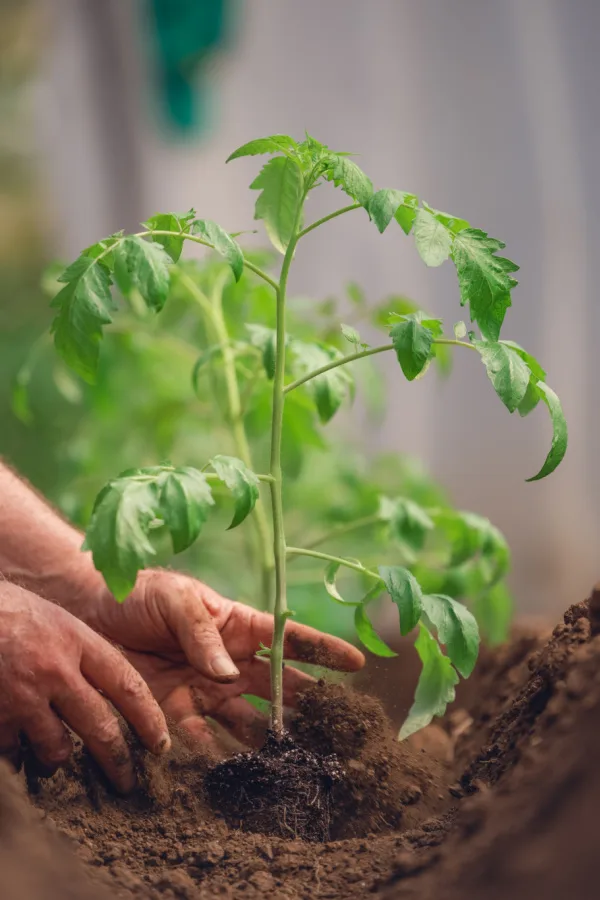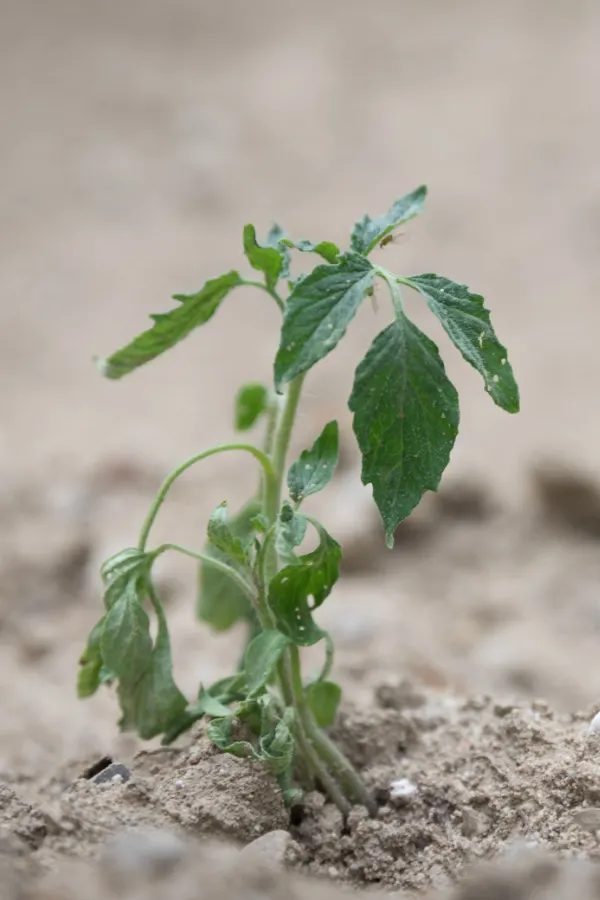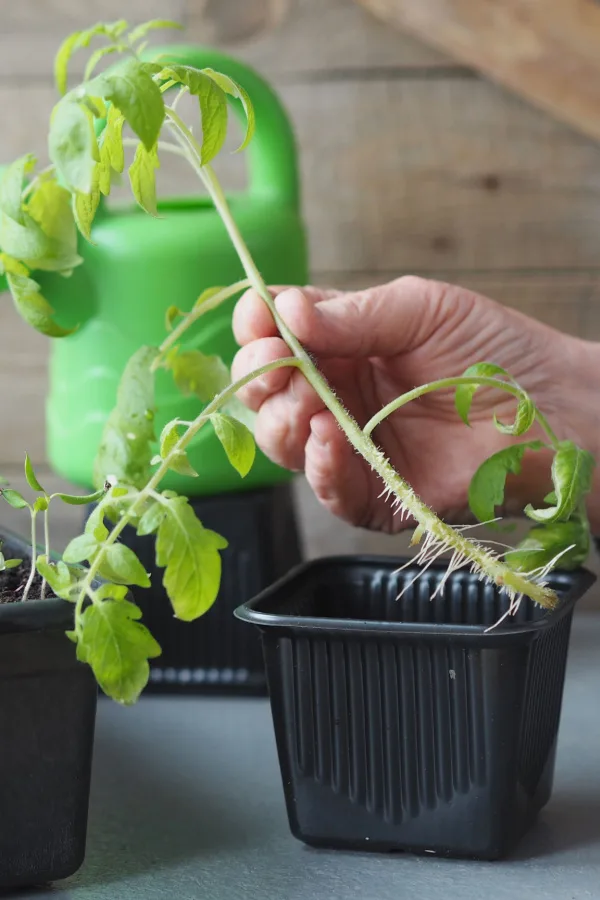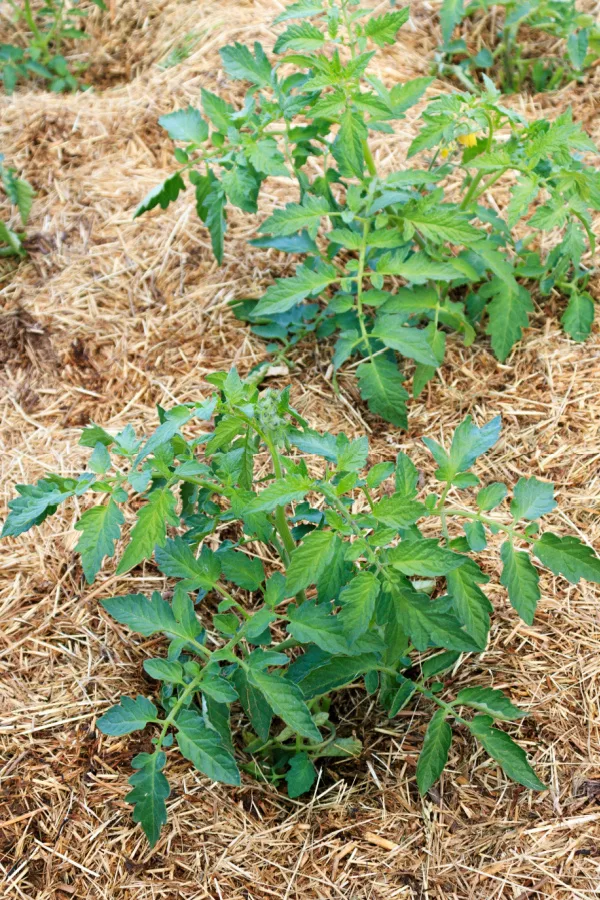One of the best ways to ensure a healthy crop and harvest of fresh tomatoes is to avoid three of the most common planting mistakes gardeners make when planting their tomatoes.
Tomatoes are technically a fruit, but the plants are usually treated like vegetables. They can be consumed raw or cooked and are used in so many different sauces, dishes, salads and even drinks. It’s no wonder why they are so popular because they are so diverse!
While you can of course purchase tomatoes at nearly every grocery store, the fruit just doesn’t compare to the fresh taste and tang of fresh, home garden picked tomatoes.

However, tomatoes can be a bit frustrating to grow for gardeners. From plants that are full of lush, green foliage but produce little to no fruit – to plants that are riddled with diseases and pests, tomatoes can leave even a seasoned gardener scratching their head.
Thankfully, some of the biggest issues can be avoided if you take a bit of extra caution. Keep reading to find out about the top three mistakes that gardeners tend to make when planting tomatoes – and learn what you can do to get your crop off to a great start this growing season!
3 Tomato Planting Mistakes
Tomatoes come in all different sizes, shapes, colors, styles, and growing patterns. No matter if you grow determinate or indeterminate tomatoes; large slicing or little cherry tomatoes; or even red, pink, or purple varieties, avoiding the following mistakes can make a huge difference in the outcome of your crop and your final harvest.
#1 – Planting Too Early
We’ve all been there – It’s been a long, cold winter and you’re ready to get your hands dirty.
Maybe you are starting your tomato seeds indoors to get a head start. Or, maybe you are going to be purchasing transplants and have started to see them everywhere at local nurseries. Whatever the case, you have to be sure not to plant your tomato plants outdoors too early.

Tomatoes are warm weather-loving crops. Once established, they thrive in temperatures between 75 to 95º Fahrenheit (24 to 35º Celsius). In addition, they need warm soil in order to produce strong, healthy roots and to grow properly.
If you plant your tomatoes outside when the temperature seems to be warm enough but then a freeze or frost happens, your young plants might not survive. If they do survive, they will likely be more susceptible to diseases and other issues down the road.
The same thing goes if you plant young seedlings in cold soil. If the soil isn’t warm enough, then the plant’s roots will struggle to grow and develop properly. This can leave them susceptible to rot and mildew, as well as not providing a strong base for plants to grow on.
As tempting as it might be, wait to plant your tomato transplants until nighttime temperatures are consistently staying above 50º F (10º C). Also, wait until the soil is at least 60º before putting them in the soil. Using a simple soil thermometer can be useful to help you keep an eye on soil temperatures. (Product Link: Urban Worm Soil Thermometer)
#2 – Not Planting Deep Enough
The next tomato planting mistake to avoid is not planting your transplants deep enough. With most plants, the stem should stay above the soil line while the roots are under the ground. But with tomatoes, the deeper you plant them the better they will grow.

Tomato plants are capable of growing long roots. When the plant tissue on a tomato’s stem contacts soil, it shoots out roots that will help anchor and grow the mature plant.
You’ve likely also noticed that tomato plants get extremely top-heavy. When full-grown plants are riddled with ripening fruit, their stems are burdened by the weight. While tomato supports will help some, they can only do so much. If a plant doesn’t have enough of a strong root structure in the soil, then it can topple over – support and all!
To help ensure that your tomato plants do have a strong root structure, plant them at least 6 to 8 inches deep. That means that you will likely need to bury a portion of the stem and even some of the leaves as well.
By doing so, the tiny hairs that are along the stem will turn into additional roots as the plants grow. This will help to give the plant a much stronger and sturdier base to help support all of the future growing fruit.
#3 – Not Using Mulch
Lastly, another mistake gardeners make when planting tomatoes is not using mulch. If you have been on the fence about using mulch in your garden, then hopefully this will help convince you. Mulch is the absolute key to a great garden!
Think of mulch as a type of protective shield. It helps to protect the tomato plants and in return adds wonderful organic matter back to the soil as it breaks down.

Organic materials such as grass clippings, straw, shredded leaves and even compost are perfect all-natural mulches. Not only are these materials easily accessible, but you can also often get them inexpensively or even for free. (Who doesn’t like some money-saving options when it comes to gardening?!)
Mulch will help to retain moisture in the soil. As you water your tomato plants or when it rains, the mulch will help to hold in moisture and keep the sun from drying out the soil.
Since tomatoes are 95% water, moisture is a huge aspect of growing healthy, plump fruit. It will also help reduce the frequency with which you need to water plants. Mulch can also help soil born diseases such as tomato blight from getting to the plant’s lower leaves.
Mulch will also help regulate soil temperatures, which in turn helps prevent roots from having too much stress. In addition and probably one of the best reasons for using mulch, is that it helps to suppress weeds. A plant competing for nutrients with weeds will struggle to grow properly – but mulch can keep weeds away.
To Conclude . . .
Hopefully, by avoiding these three little planting mistakes, you can have an excellent tomato crop and harvest this year! For even more gardening tips, be sure to sign up for our free email list so you can have garden articles sent right to your inbox!
Follow Our Facebook Page For Even More Great Tips! Simple Garden Life Facebook Page
Simple Garden Life is a website dedicated to keeping gardening fun, simple and enjoyable! We publish two new articles each week along with a new garden podcast episode every two weeks. This article may contain affiliate links.
